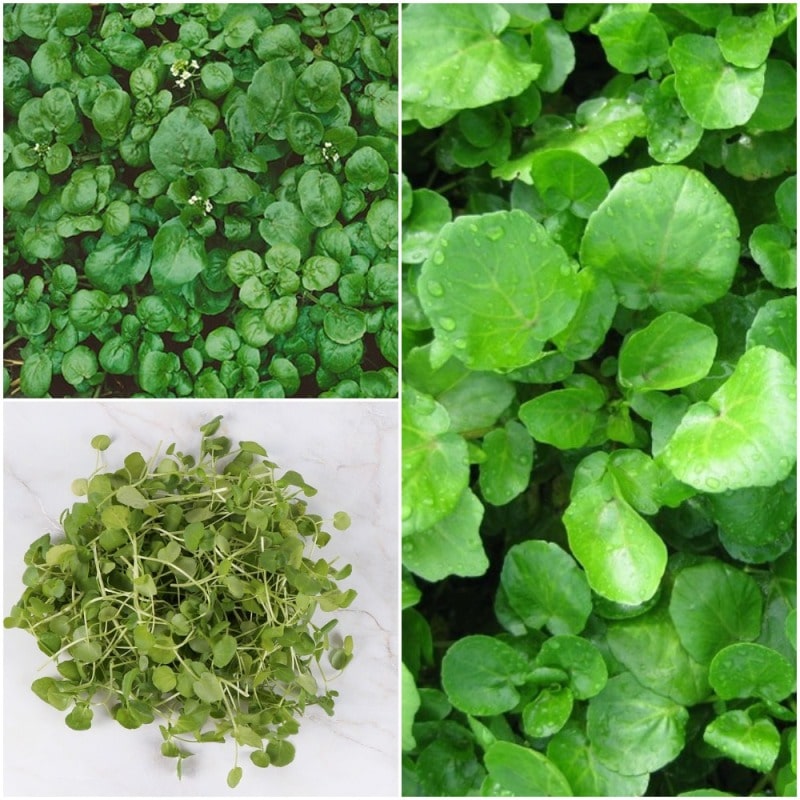A step by step guide to growing watercress hydroponically
Would you like to learn the process of growing watercress hydroponically
(without soil) ? You are are in riht place. Watercress is famous for its characteristicflavour, as the name suggest, is a water-loving crop that develops really very well when grown in any of the hydroponic systems. Although hydroponics can be a little expensive when you are just getting started, but not always. several plants, especially those like watercress that grows best when wet, they flourish in a simple floating system that you can easily make from a few readily available materials by DIY. Exotic aquatic crops are possibly some of the most preferably suited plants for soilless-culture hydroponics. Personalized to warm, wet, flooded environments, they prosper when their roots are constantly submerged, and commonly have robust constitutions. Watercress is a member of the mustard family it is popular because of its taste, a short shelf –life and rarity.
Watercress develops and produces well in cool conditions comparable to that ideal for lettuce. It is grown mainly for use as a fresh salad crop and has a peppery, tangy flavour, but it can also be cooked. Being one of the oldest known leaf vegetables consumed and forwatercress microgreens
Watercress is generally grown in hydroponic systems for the reason that the uncontaminated growing environment is favoured over crops harvested from the wild or disease-prone culture.

The answer to a question like How to grow watercress without soil is simple and easy that one can use hydroponics or aquaponics. How to grow watercress in aquaponics is same as hydroponics the only difference is nutrient solution is misted on the developing plants.
You should not miss the Hydroponic Greenhouse Farming.
Watercress can be propagated from watercress seeds, or from cuttings that form aerial roots at the nodes of the mature plants. A cut stem if placed in nutrient-enriched water will develop a new root system within a few days that are ready to be transplanted into a hydroponic system. Using this simpler method, watercress plants can be started from bunches of watercress stems purchased fresh from the grocery store.
Approximately watercress seeds in 10-20 number should be planted per 2-inch net pot. Seeds may be sown on the surface of the growing medium in the net pot and they are not covered. Seeds usually germinate within 3 days sprouting watercress. Watercress plants will continue to grow for 4 to 6 weeks without giving any special attention. Its natural growing season is from mid-autumn until spring. After its flower buds appear the leaves become too low in flavour to be edible.
Watercress seeds for the germination may take approximately 7 to 14 days, but can easily germinate in as few as 5 or 6 days in devoted propagation grow media such as Oasis Rootcubes, Rapid Rooters, or GrodanStonewool because of its high moisture retention quality.
Watercress grown outdoors has a preference for full sun but tolerates some shade. Watercress grows indoors successfully by supplementing standard fluorescent lamps with few hours of sunlight, and it grows exceptionally well under high output T5 fluorescent grow lights, compact fluorescent, or high-intensity discharge (metal halide or high-pressure sodium) plant grow lights can be used by commercial growers because they are expensive. A grower should keep standard fluorescent lamps about 2 to 4 inches away from the tops of the plants, high output and compact fluorescents approximately one foot above the plants, and HID lights between 2 and 4 feet above the plants, depending on their wattage. One must have an oscillating fan when growing hydroponic watercress gently to stir young seedlings for at least 2 hours every day to stimulate shorter, sturdier, and more natural plant habit.
You may also check the Growing Asparagus Hydroponically.
The Hydroponic nutrient solution for watercress
You can buy any of the specialized hydroponic nutrient solutions for growing watercress available in the market. A small amount of nutrients can help with the growth, but make sure you avoid high nutrient-solution temperatures as they will promote early flowering on the stems. Watercress is a fast and easy plant to grow. The stems can be cut for use at a young stage, leaving the plant to rejuvenate more foliage for further cuts. Advanced growers can test the nutrient solution with an EC meter to maintain nutrient solution strength of 1.5 to 2.0 mS. The pH of the nutrient solution may also be tested using either a pH meter or pH indicator solution. An acceptable pH range supporting good crop health is 5.0 to 7.0. Watercress favours a slightly alkaline growth environment, so you may not get optimal performance in a system with other hydroponic plants at a usual pH of 5.8-6.5. Watercress plants do not tolerate stagnant water, it needs to be constantly moving and aerated. Moreover, mosquitoes can also breed and reproduce in nutrient solution which is not circulated or aerated time to time and this may become both a health menace for home growers as well as a nuisance to workers growing watercress commercially. In hydroponic systems, the plants require growing temperatures to be around 77-86°F for their rapid growth, making indoor gardens or greenhouses just right for year-round watercress production.
Kratky method watercress for raising watercress in soil-less culture is most used and easiest. For high volume production, one can also use DWC, Dutch bucket system and NFT of hydroponics.
Harvesting hydroponic watercress
Most of the hydroponic watercress plants can be repeatedly harvested over many months and only required to be removed when their root systems become too large for the hydroponic system. At this period, stems can be simply cut from the plants and slotted into new planting holes to start a new crop. The major pests when it comes to watercress are caterpillars, which infest the leaves at certain times of the year.
That’s all folks about growing watercress hydroponically. Keep growing food in hydroponics!.
You may also like Tomato Farming in Summer.